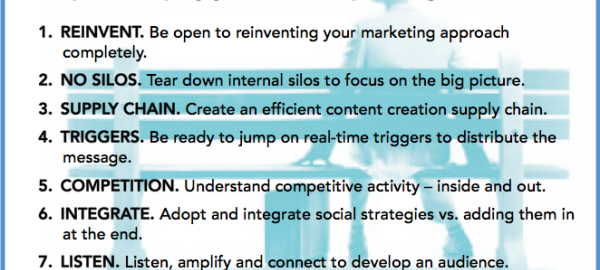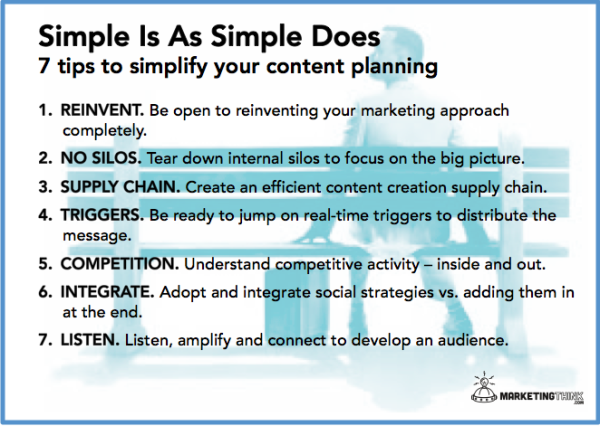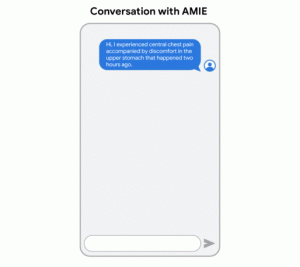By Gerry Moran, Published November 11, 2014
Forrest Gump tells us “Stupid is as stupid does.” Well, if that is the case then we should stop being stupid with our annual content marketing planning. Rather, the new quote should be “Simple is as simple does.”
Simplification is the new innovator. Simplification is the new disruptor. Simplification is the key to a deeper customer connection.
Let’s make things more simple in 2015!
Too many brands have an enthusiastic, scattershot and complex approach to their digital and content go-to-market strategy.
Sales, marketing and content creation have converged. The sooner we simplify and innovate this convergence, the sooner we catch our customers’ attention to deepening the relationship. If we are Modern Marketers (and sellers and publishers), then we should think how to connect better with our Modern Buyers in today’s digital, social, and customer-centric time.
7 Ways To Solve The Content Marketing Planning Conundrum
1. Be open to reinventing your marketing approach completely. If there is ever a sacred cow in the brand strategy room, it’s content creation – who owns it, who deploys it, who measure it? Modern Marketers need to consider killing their current approach to customer contact with relevant content. Focus on creating content that customers want to read. And, manage the right metrics to understand its business impact. Measuring content and connection success from the ground up – the connecting awareness, consideration and conversion business impact will translate into a winning business strategy.
2. Tear down internal silos to focus on the big picture. Departmental silos are complex and stunt innovation. Daily, big brands and small businesses navigate the gauntlet of tools, content creation, resourcing, and budget management silos. Modern Marketers need to tear down silos and focus on their long-term strategic thinking and activation that is the most efficient path to get from point ‘A’ to point ‘B.’
3. Create an efficient content creation supply chain. Content has many lives on many different channels, so we need to consider how the content creation supply chain can work for us vs. against us. Many brands spend too much time creating content for one-time use. When brands simplify content creation and distribution they build for long-term use. This focus enables them to double down on the opportunity to drive always-on organic reach. What if marketers built content as if it was at the start of its journey instead of its end? Create content at an earlier stage, to be consumed and shared in multiple channels – email, Twitter, blogs, videos, SlideShare, social selling posts – to simplify the marketing process. Create content to make it easier for everyone to share content on earned channels.
4. Be ready to jump on real-time triggers to distribute the message. Anchored and pop-up trigger events are a simple strategy to fuel the spread of hot content. For instance, in 2014 The New York Times assessed they strategically handled the Michael Sam ‘trigger event.’ However, their digitally and socially savvy competitors focused their content and owned channels to jump on the opportunity on Google hangouts and YouTube interviews – where THEIR readers were vs. where the owned channels were.
5. Understand competitive activity – inside and out. Competitive tracking is one of the simplest ways to stay ahead of the competition. Brands need to be listening to, reading about and dissecting competitive campaigns apart to know what’s working with their content and distribution. For instance, brands should regularly review HubSpot’s and Marketo’s content and marketing strategy, whether or not they are competitors. Listening and discovering how others ‘do marketing’ will help you to advance your marketing strategy more quickly.
6. Adopt and integrate social strategies vs. adding them in the end. Everyone knows it’s harder to retrofit something vs. building it from the ground up. Social media morphs content and distribution to the readers. It’s clear that many brands add social into the mix as an afterthought – sometimes as a wrong-sized or misplaced gear in their machine. This misplacement hinders organic distribution. Brands must figure out how to activate their content creators and marketers to think more socially. Companies are still trying to figure out how to leverage social to grow their audience (see their leaked report from 2014); likely due to their internal struggles. On the other hand, BuzzFeed has increased their footprint by 6X; likely due to smart social coworkers, empowerment and understanding that a great social media share is better than a great article headline.
7. Listen, amplify and connect to develop an audience. As Brian Halligan, CEO of HubSpot implied “If you’re not (listening to and) responding to customer inquiries, questions from leads and prospects about your products, and influencers in your space on social media, your competitors are, and they will eat your lunch.” Listening is always the first step to developing content, and audience and a sale!
Do you have a tip to help simplify sales, marketing and content planning for 2015? If so, please share in below in the comment section. Or, contact me directly at MarketingThink.com, on Twitter, LinkedIn or Google+.
As the New York Times stated, “We need makers, entrepreneurs, reader advocates and zeitgeist watchers’ to make the Modern Marketer recipe work.” Here’s to cooking up a simple plan for 2015.
Business Articles | Business 2 Community
(354)
Report Post







